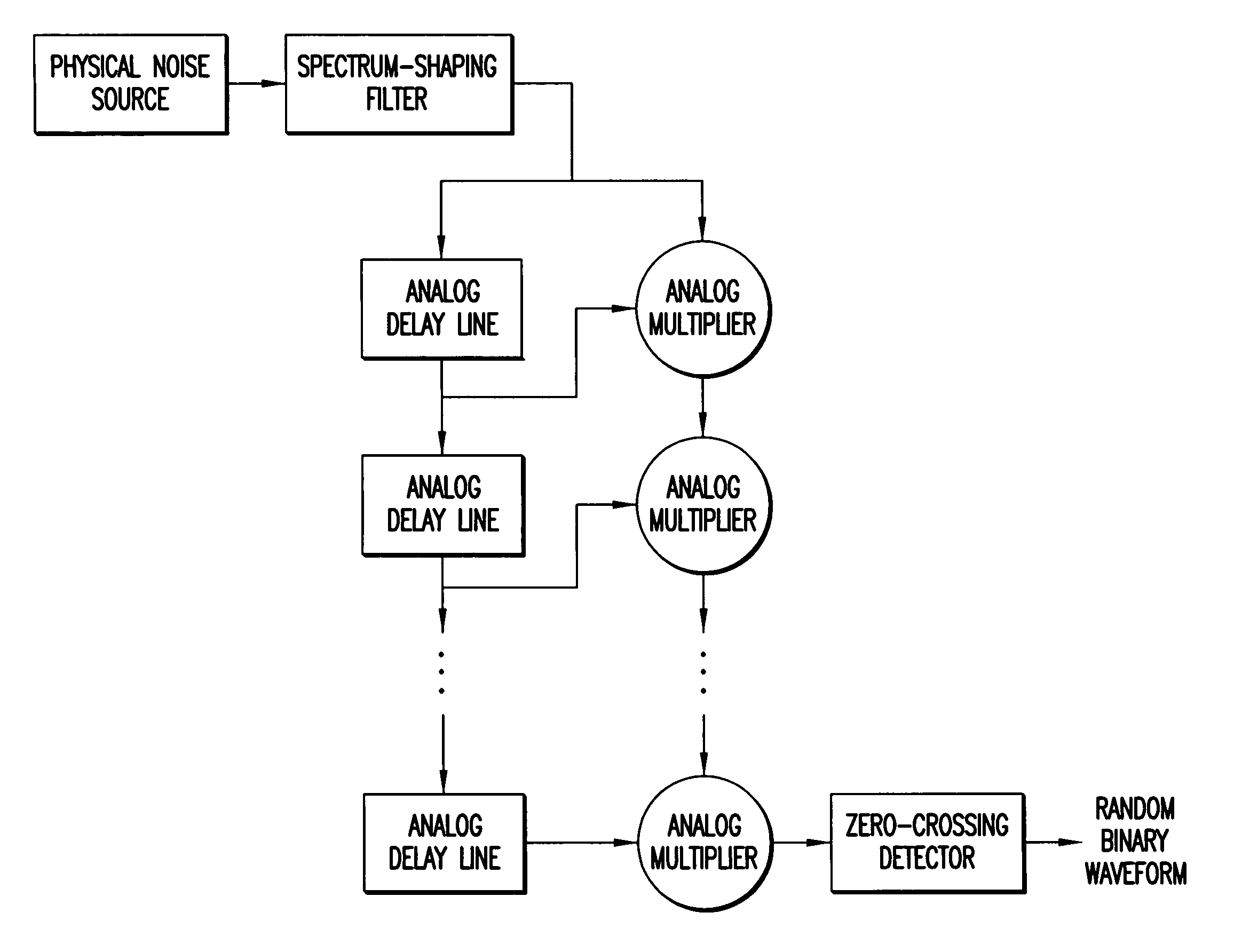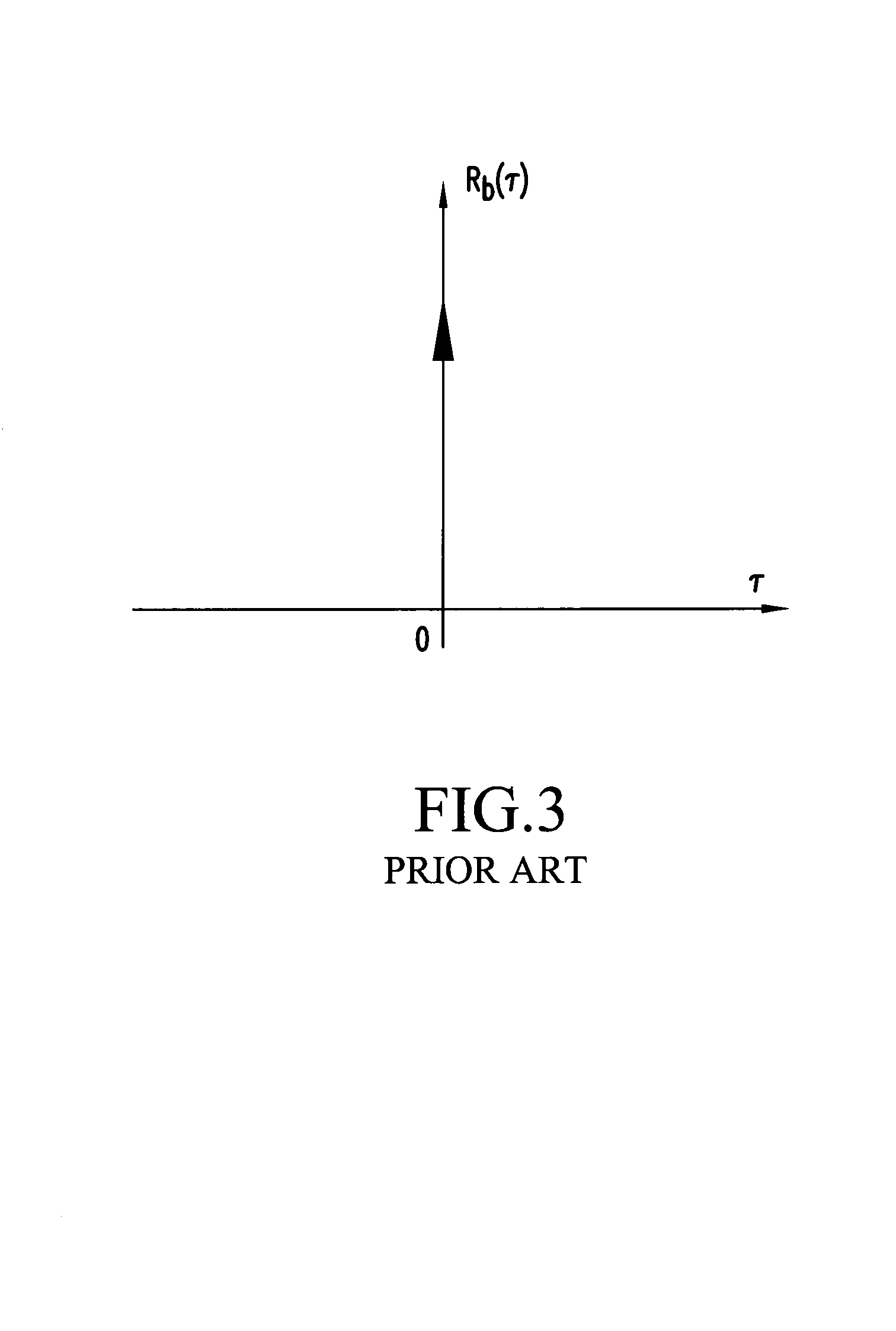Method and apparatus for generating random signals
a random signal and generating method technology, applied in the direction of pulse generation with predetermined statistical distribution, instruments, measurement devices, etc., can solve the problems of not being able to reduce the width of the correlation function rsub, not being able to assign a distinct binary sequence to each, and difficult to construct large sets of long pseudo-random sequences
- Summary
- Abstract
- Description
- Claims
- Application Information
AI Technical Summary
Benefits of technology
Problems solved by technology
Method used
Image
Examples
Embodiment Construction
[0031]FIG. 4 shows a system according to the present invention that comprises a plurality of wideband physical noise sources (PNS) followed by spectrum-shaping filters (SSF), a plurality of analog multipliers (AM) or balanced modulators, and a single zero-crossing detector (ZCD) which can be a comparator or a hard limiter. A random binary waveform (RBM) useful for modulating a carrier prior to transmission in radar and communications applications is obtained at the output of the zero-crossing detector (ZCD).
[0032]Preferably the physical noise source (PNS) is a Zener diode used as per se known in the prior art, which provides an output having a Gaussian voltage distribution.
[0033]Preferably the zero-crossing detector (ZCD) is a fast comparator with a zero threshold.
[0034]In operation, each physical noise source (PNS) produces a waveform similar to that shown at s(t) in FIG. 2, the waveforms being uncorrelated. Each waveform is filtered by a respective spectrum-shaping filter (SSF) wh...
PUM
 Login to View More
Login to View More Abstract
Description
Claims
Application Information
 Login to View More
Login to View More - R&D
- Intellectual Property
- Life Sciences
- Materials
- Tech Scout
- Unparalleled Data Quality
- Higher Quality Content
- 60% Fewer Hallucinations
Browse by: Latest US Patents, China's latest patents, Technical Efficacy Thesaurus, Application Domain, Technology Topic, Popular Technical Reports.
© 2025 PatSnap. All rights reserved.Legal|Privacy policy|Modern Slavery Act Transparency Statement|Sitemap|About US| Contact US: help@patsnap.com



